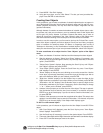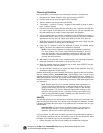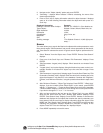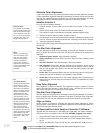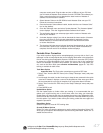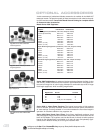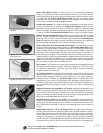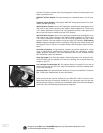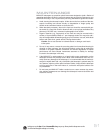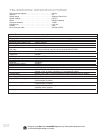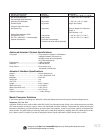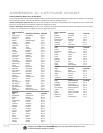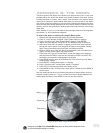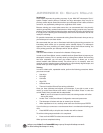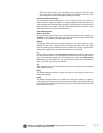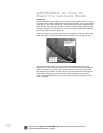
MAINTENANCE
MAX-ACF telescopes are precision optical instruments designed to yield a lifetime of
rewarding applications.Given the care and respect due any precision instrument, your
MAX-ACF will rarely, if ever, require factory servicing. Maintenance guidelines include:
a. Avoid cleaning the telescope’s optics: A little dust on the front surface of the tele-
scope’s correcting lens causes virtually no degradation of image quality and
should not be considered reason to clean the lens.
b. When absolutely necessary, dust on the front lens should be removed with gen-
tle strokes of a camel hair brush or blown off with an ear syringe (available at any
pharmacy). DO NOT use a commercial photographic lens cleaner.
c. Organic materials (e.g., fingerprints) on the front lens may be removed with a
solution of 3 parts distilled water to 1 part isopropyl alcohol.You may also add 1
drop of biodegradable dishwashing soap per pint of solution. Use soft, white facial
tissues and make short, gentle strokes. Change tissues often.
Caution: Do not use scented or lotioned tissues or damage could result
to the optics.
d. Do not, for any reason, remove the correcting plate from its machined housing for
cleaning or other purposes. You will almost certainly not be able to replace the
corrector in its proper rotational orientation and serious degradation of optical
performance will result. Meade Instruments assumes no liability for damage
incurred to the telescope in this way.
e. If the MAX-ACF is used outdoors on a humid night, water condensation on the
telescope surfaces will probably result. While such condensation does not nor-
mally cause any damage to the telescope, it is recommended that the entire tel-
escope be wiped down with a dry cloth before the telescope is packed away. Do
not, however, wipe any of the optical surfaces. Rather, simply allow the telescope
to sit for some time in the warm indoor air, so that the wet optical surfaces can
dry unattended.
f. Do not leave your MAX-ACF inside a sealed car on a warm summer day; exces-
sive ambient temperatures can damage the telescope’s internal lubrication and
electronic circuitry.
51
Looking at or near the
Sun
will cause
irreversible
damage to your eye. Do not point this telescope at or near the
Sun. Do not look through the telescope as it is moving.



